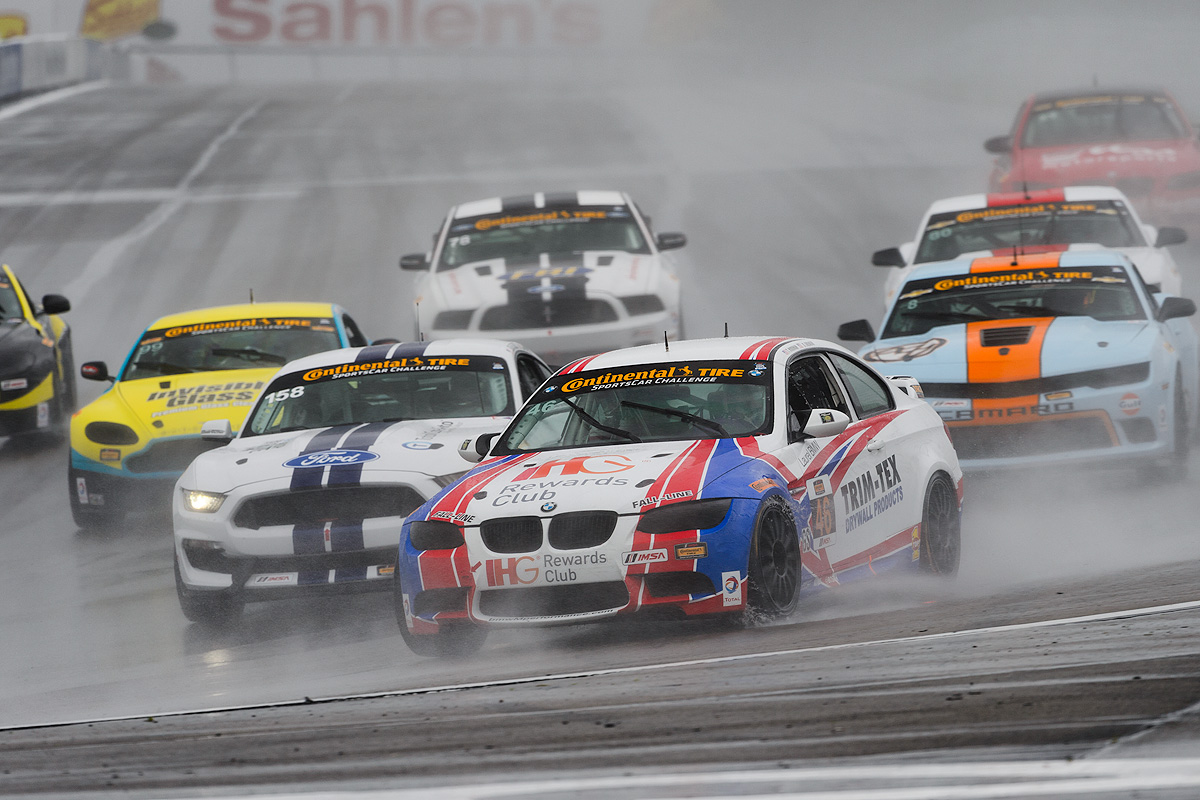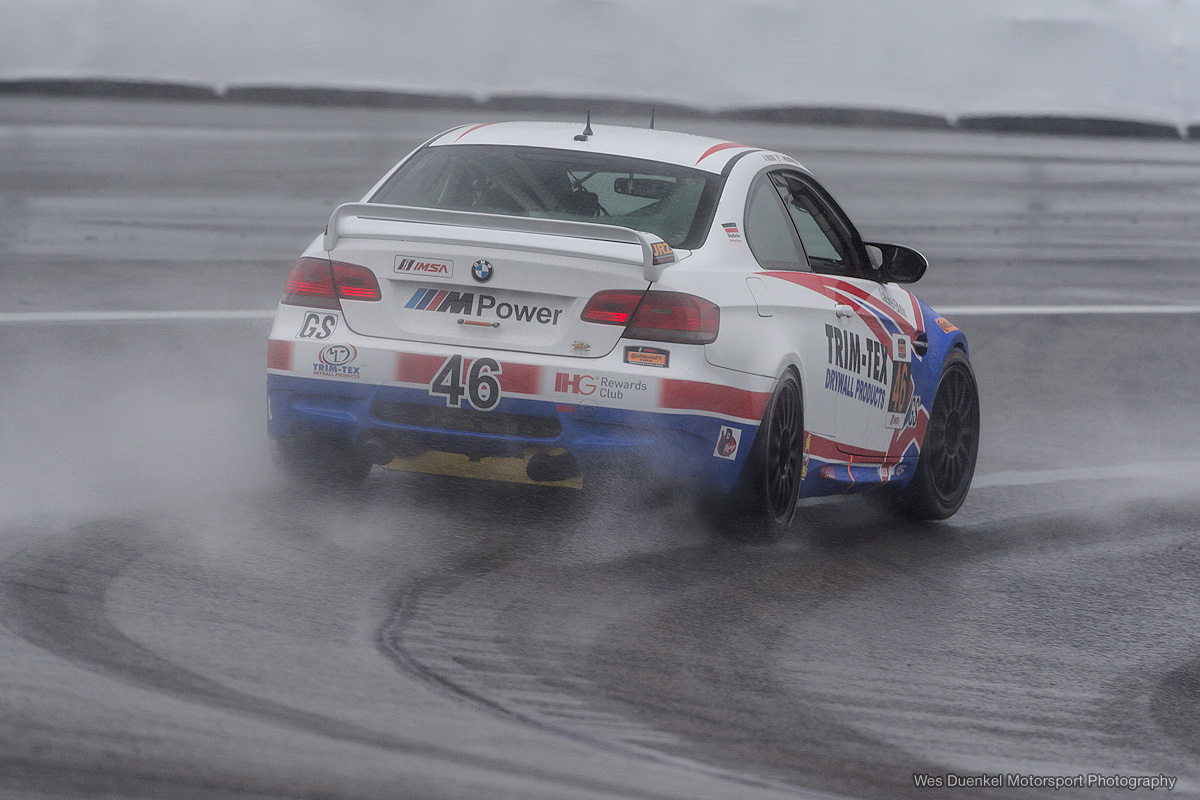 This past weekend’s race at Watkins Glen was quite an adventure. Throughout most of the weekend, it was dry and sunny through practice and qualifying, but when race day came around, so did the rain. I’ve had quite a bit of experience racing in the rain, and I’ve learned to love it, because to me it reinforces some of the basics of driving that should always be applied, no matter what conditions you’re in.
This past weekend’s race at Watkins Glen was quite an adventure. Throughout most of the weekend, it was dry and sunny through practice and qualifying, but when race day came around, so did the rain. I’ve had quite a bit of experience racing in the rain, and I’ve learned to love it, because to me it reinforces some of the basics of driving that should always be applied, no matter what conditions you’re in.
Here are a few things that I've learned that I apply not only to my racecraft, but also to how I drive on the road when it rains, or even when it snows.
Stay calm. The more relaxed you are, the more aware you are of your surroundings, and the more room you have in your mind to gather information. Last weekend my windshield fogged up so badly there were times I found myself looking out my side window to see where I was!
It can be easy to tighten up when something different is added to the mix—like when visibility gets bad. Whether it’s heavy rain, mist, fog, or snow, if you stay calm and think through the process, you can find and use other references—the painted lines on the road, tree tops, or power lines, or for me, the brake markers on the side of the race track, bumps on the track, and the faint red taillights of other race cars ahead of me.

Be adaptable. When I am racing in the rain, the biggest priority is to find grip. On a race track, the regular dry racing line is polished, and therefore super-slick when it’s wet, so I deliberately drive off-line—but I need to be aware of any other slippery sections of the track like pavement sealer, paint, and standing water—or, in the particular case of Watkins Glen, any cement that affects grip levels. I am always trying different lines through corners, sorting out what works best; depending on how much or little it’s raining, sometimes the best line through a corner changes every lap! I always have to be ready to change what I’m doing.
Being adaptable on the road is important as well. There is a road near my house in Vermont that is worn and has some pretty deep wagon-wheel ruts that fill with water in heavier rainstorms. I always make sure that I am placing my tires onto high ground to avoid any hydroplaning; on any road, I avoid standing water as much as I can. In the snow, I am also constantly looking for grip; sometimes the best grip is in the fresh powder, and not where everyone else has been driving, because it can get packed down and turned to ice. Grip is a constantly moving target, and you have to adapt and drive to where the traction is.

Be smooth. Any abrupt inputs are amplified when you add rain or snow to the surface. In my race this weekend, at every corner I would literally have to remind myself to be super-smooth with my feet and hands. In the dry, with high grip, the car can handle more aggressive inputs; in rain or snow, it is like a ballet: smooth on the brakes, smooth off the brakes, slow turn of the hands, and smooth application on the throttle. It is all about flow and blending your movements into one so you don’t upset the car and break traction.
Read the car and the surface. Having open communication with my race car and my street car is important, because they give me information about where the grip is; they tell me how they want to be driven. Through the pedals, I can feel a loss of grip through brake lock-up by the ABS starting to vibrate; through the steering wheel, I can feel the resistance getting “light” and the wheel providing less feedback if there is a loss of grip, and I can feel in the seat of my pants if the car is sliding sideways, or not accelerating forward if I am applying throttle on a low-grip surface. As I mentioned before, all of my senses are intensified because I am calm, relaxed, and thoughtful (well, at least I am trying to be!).

Keep learning. One moment that taught me a huge lesson came in the snow in my street car, when I learned that sometimes there is more grip in untouched snow than where the wheel ruts are from other cars, because those ruts can be icy, or they may contain a slushy layer that leads to hydroplaning. On the race track, sometimes the line everyone else is driving isn’t always the right way or the best way. Try new things—cautiously—and take note of whether it was better or not. You never know where you can find an advantage on track, or a safer line on the road!
The finish line is the only thing that matters. The fastest car on track doesn’t always win the race; it is the car that is the most consistent and mistake-free that does. The same goes for the road: It is better to make it through each corner smoothly and to reach your destination safely than to try and get there fast and increase your risk of something going wrong.

All of this discipline should be applied to every kind of driving, whether it is wet or dry. The biggest thing I’ve learned is that rain only intensifies what you should already be thinking about, and I believe it forces you to think, learn, and come back to the very basics of driving a car well. In the end, it makes you a better driver, because it helps you become more aware of the car and the surface, and of what you have to do as a driver to get the most out of it.
I know that after this past rainy race at Watkins Glen, I will be a more sharpened driver—not only going into my next race at Mosport, but driving my way through the Green Mountains in Vermont as well.—Ashley Freiberg
Follow Ashley on social media: Facebook, Instagram, and Twitter.









